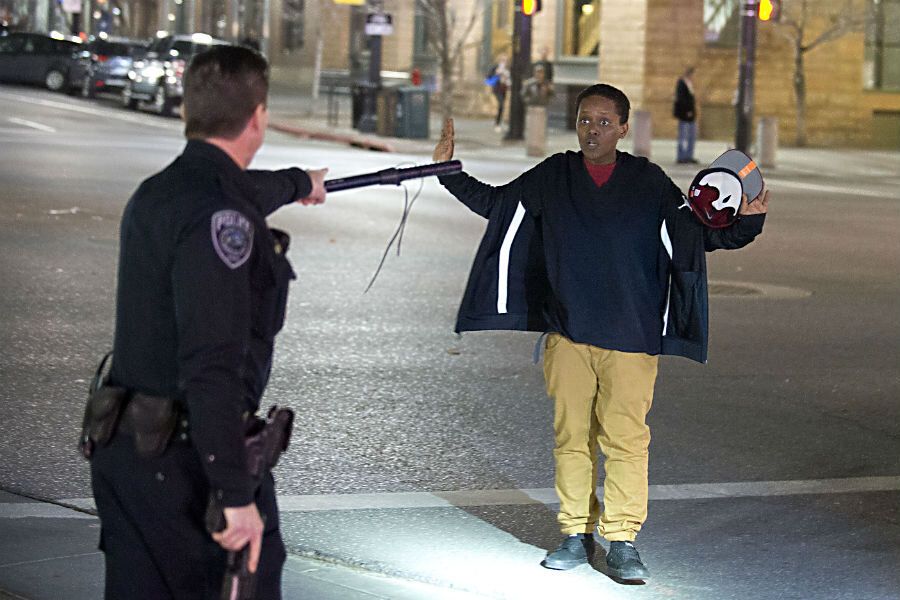Why Salt Lake City police won't release video of teen shooting
Loading...
| Salt Lake City
Police are withholding footage from body cameras that officers were wearing when a 17-year-old boy who was wielding a metal stick was shot and critically injured, a brief confrontation that ignited hours of unrest in Salt Lake City's bustling downtown.
Salt Lake City police say they are not releasing the footage because of the ongoing investigation and the possibility that the teenager could face charges.
The teenager was shot twice in the torso and remained in critical condition Sunday, according to Detective Ken Hansen with the Unified Police Department, which is investigating the shooting. Salt Lake City Police declined to identify the boy because he is a minor.
The department said the teen and another person were attacking a third person with metal sticks Saturday night when officers stepped in. Officers told them to drop their weapons, but the teen instead moved menacingly toward the victim, Salt Lake City Police Detective Greg Wilking said.
That's when one or both of the officers opened fire.
Police had said earlier Sunday that the teenager was shot when he tried to attack one of the officers. Wilking said investigators were still trying to determine if that was the case. He said they had not yet interviewed the officers involved, neither of whom was injured.
Police are not releasing the identity of the officers but said Sunday that both were placed administrative leave while the incident is investigated.
Bystander Selam Mohammad told The Salt Lake Tribune and Deseret News that he was friends with the teenager and said the boy was shot as he turned to face police.
"He barely even turned around, then boom, boom, boom — and he just dropped," Mohammad told the Deseret News.
Hansen said he could not confirm or deny that account.
In a statement, Salt Lake City police said body cameras captured the incident on video.
Two SLCPD officers were involved in the shooting. Both involved officers had body cameras activated at the time of the shooting. The video evidence has been turned over to a team led by the Unified Police Department who will be handling the investigation per Salt Lake County’s Officer-Involved Critical Incident Protocol. Once the Unified Police Department’s investigation is complete, they will submit the case to the District Attorney’s office who will make a determination on the shooting. Other independent reviews will be done by the Salt Lake City Civilian Review Board, SLCPD Internal Affairs and the SLCPD Training Unit, where information from the review will be applied to future scenario-based training, lessons learned, and policies.
“We are committed, to ensuring the Salt Lake City Police Department does business appropriately, in line with the community’s trust and expectations,” said Chief Mike Brown. “Our goal is to always de-escalate any type of volatile situation using the minimal amount of force necessary.”
After the shooting, bystanders began yelling obscenities and throwing rocks and bottles at police, who called in about 100 officers to help.
Police barricaded four surrounding city blocks and a light rail stop in the neighborhood was closed.
Hansen said the area was relatively busy, with people visiting a shopping center and restaurants and others hanging out at a nearby homeless shelter.
"There were pockets of that disturbance for hours," Hansen said Sunday.
Wilking said bystanders were throwing objects at police for only about 10 minutes. He said police asked people to leave, but did not physically move anyone. Four people were arrested for civil disorder, Salt Lake City police said.
Salt Lake City Mayor Jackie Biskupski said in a statement Sunday that she was saddened and that the shooting was a tragedy for everyone involved.
"The use of force by law enforcement against the public can tear at the delicate balance of trust between both sides, and must be taken extremely seriously," she said. "These incidents create a number of unanswered questions in the short term, and justice requires we work together in good faith to find answers."
___







